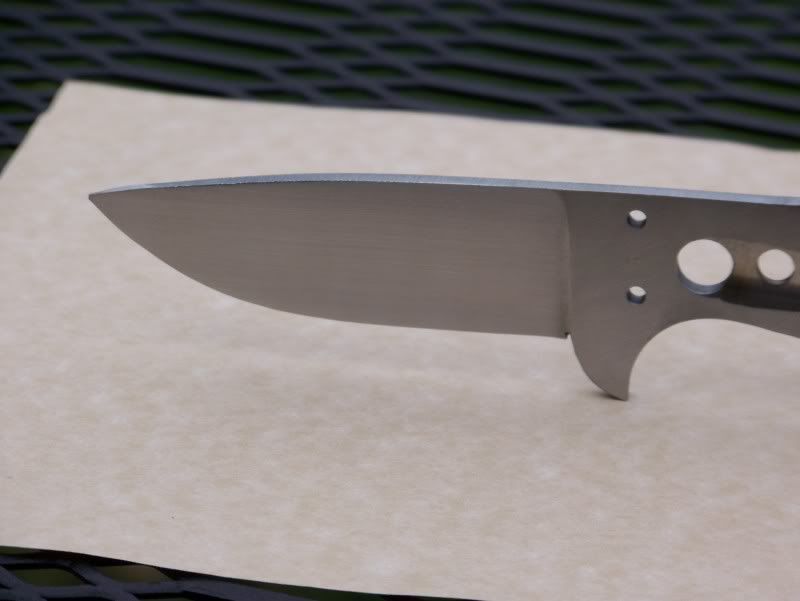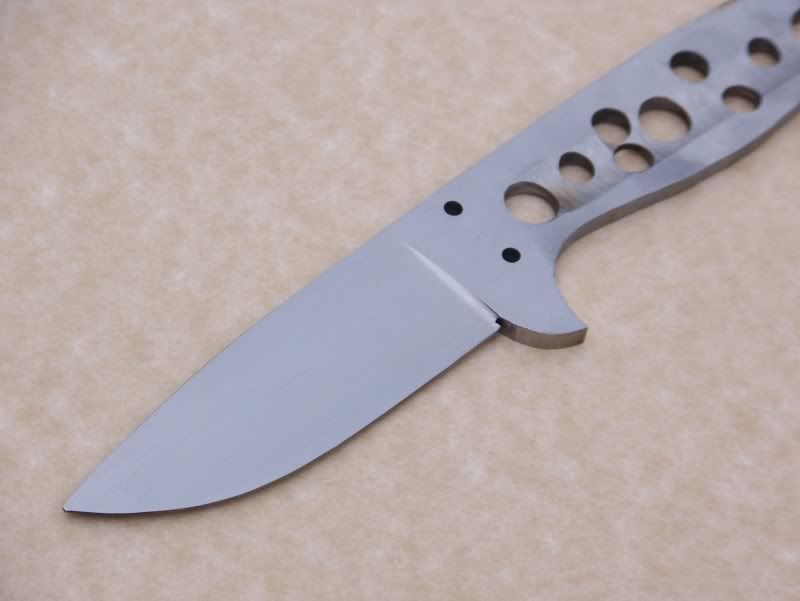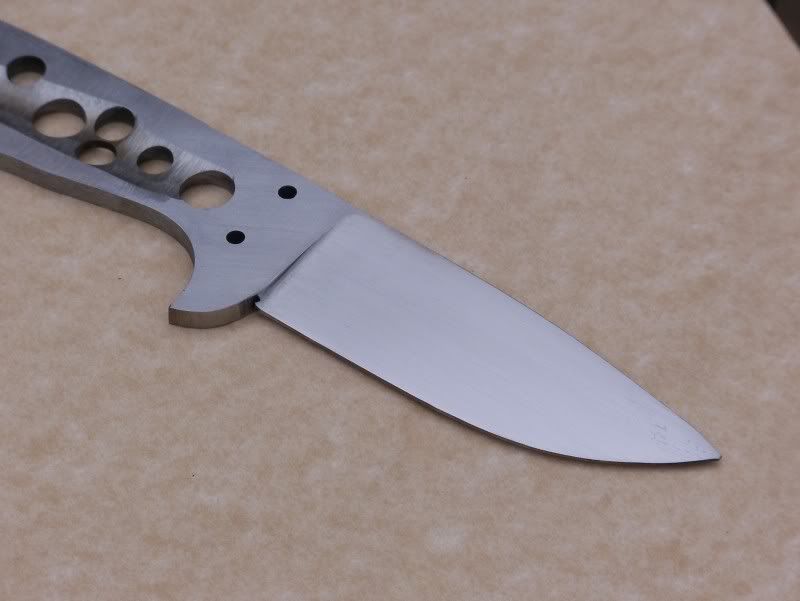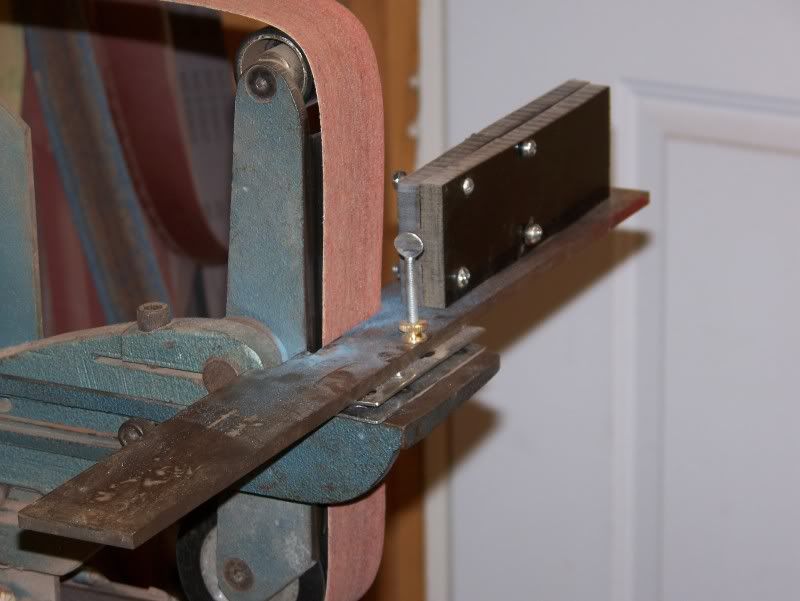Frank Niro
KNIFE MAKER
No matter what it is, if it works for you it's great !!! After trying an idea or two with a similar idea of tilting the blade holding fixture instead of the table, I found there was several shortfalls in the set ups I TRIED.
1/ Having to change the blade from side to side and trying to get the same position each time does not work well even with making positions and taking measurements. Trying to readjust it as you go doesn't work well either.
2/ Having to move a big a fixture across the work table makes it hard to control.
3/ You still have to use the water pail to cool the blade on hardened blades as you go. A large fixture doesn't make that easy to do and the water is going to work on the fixture in several ways one is on the leather jaws.
4/ If you grind your blades with the metal soft you are going to have to change the blade over a minimum of four times from side to side
Of course I'm recommending a tilting table which just needs a one bolt (screw?) attatchment to your grinder and then the knife holding micarta blocks as I showed in the thread on jigs. You tilt the table as you find necessary for grinding the first side and no further adjustment is needed for the other side. Once the blade is positioned in the blocks which are not effected by water and hold the blade securely you do not have to change the blade from one side to the other, but of course you must position it back in the micarta holding blocks if you grind your blades before heat treating and you want to do more machine grinding.
Perhaps the simplicity of what I'm recommending seems just that. It's too simple to work. Well it works so very well and you can of course use it for hollow grinding or flat grinding. I don't think it's worth trying for convex grinding.
I'm not selling any part of this and am showing it for the first time in the Knifedogs forum.
I'm just offering another idea after trying and seeing several others.
1/ Having to change the blade from side to side and trying to get the same position each time does not work well even with making positions and taking measurements. Trying to readjust it as you go doesn't work well either.
2/ Having to move a big a fixture across the work table makes it hard to control.
3/ You still have to use the water pail to cool the blade on hardened blades as you go. A large fixture doesn't make that easy to do and the water is going to work on the fixture in several ways one is on the leather jaws.
4/ If you grind your blades with the metal soft you are going to have to change the blade over a minimum of four times from side to side
Of course I'm recommending a tilting table which just needs a one bolt (screw?) attatchment to your grinder and then the knife holding micarta blocks as I showed in the thread on jigs. You tilt the table as you find necessary for grinding the first side and no further adjustment is needed for the other side. Once the blade is positioned in the blocks which are not effected by water and hold the blade securely you do not have to change the blade from one side to the other, but of course you must position it back in the micarta holding blocks if you grind your blades before heat treating and you want to do more machine grinding.
Perhaps the simplicity of what I'm recommending seems just that. It's too simple to work. Well it works so very well and you can of course use it for hollow grinding or flat grinding. I don't think it's worth trying for convex grinding.
I'm not selling any part of this and am showing it for the first time in the Knifedogs forum.
I'm just offering another idea after trying and seeing several others.




